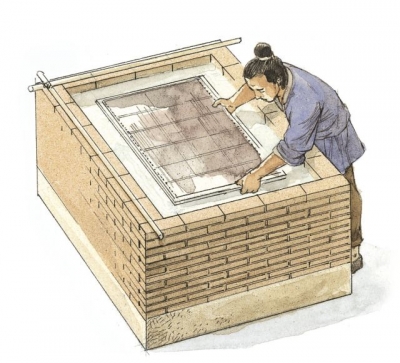
The first paper was made about 2,000 years ago in China, by a man called Ts’ai Lun. He took the stringy inner bark of the Mulberry tree and pounded it in water until it became a mass of flattened threads. He then placed this pulped solution onto a flat tray of fine bamboo strips.
The water was allowed to drain through the bamboo, and the threads in the bamboo were left to dry. The dried result was a flat, fibrous material considered to be the very first paper. As with all new discoveries, improvements are gradually made. One way of achieving this was to brush starch over the paper.
The secret of paper making soon became world-wide knowledge as Chinese traders travelled to Russia and the Middle East. From there, the art of paper making spread to Europe.
A revolutionary invention, paper-making began to be produced in mass quantities. The first continuous paper-making machine was developed in France in 1798 by next century, the Fourdrinier brothers in London developed the idea further.
|
Fact File The Chinese had another secret, they were the only people who knew how to make silk. European traders would take the long journey to take silk back to Europe. |
Picture Credit : Google
